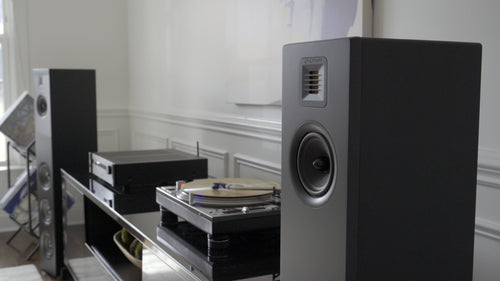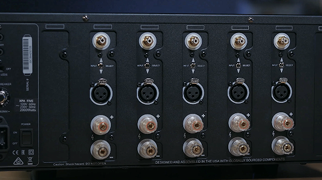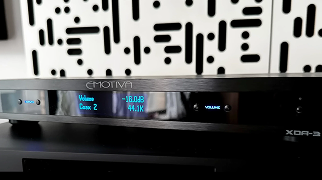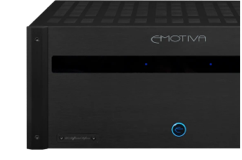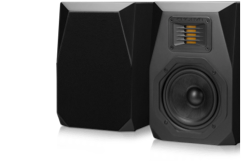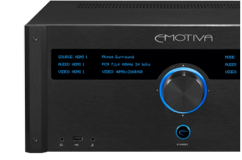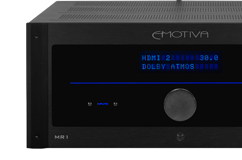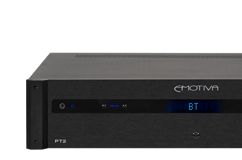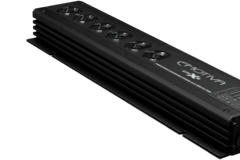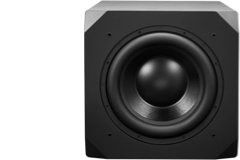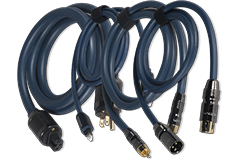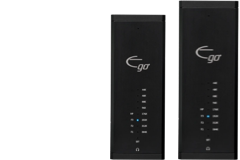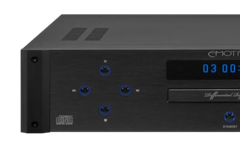
An equalizer is either software or hardware that will adjust the loudness of specific frequencies when playing back music.
While the human ear can hear sounds that range from low frequencies of about 20 Hz to high frequencies of about 20 kHz, everyone varies in how well they can hear certain frequencies and what types of frequencies sound pleasing to them. Most adults will not be able to hear any frequencies higher than 15-17kHz.
Reference: HUMAN AUDITORY RANGE
Music is often engineered to sound best on a wide variety of audio systems. However, because everyone's hearing capability varies and because audio systems and setups differ significantly, it can sometimes be necessary to add sound equalization (also known as E.Q.), or equalizer settings, to music playback to help ensure that the music not only sounds great on a specific system but also is tailored to the ear of the listener. This is where equalizers can be helpful to set up your system to sound its best and meet your preferences.
Frequencies & Frequency Ranges
When talking about frequency ranges, it is helpful to break down what frequencies fall into the low range, mid-range, and high-frequency range.
From about 20 to 60 Hz, the lowest range frequencies in music are reproduced by subwoofers or woofers in a full range speaker.
Above the lowest range are the frequencies from about 70 to about 300 Hz, which are also reproduced by woofers in a speaker. The upper range here falls into the low-midrange. For example, at Emotiva, speakers with dedicated midrange woofers are typically crossed over from 250 to 350 Hz, depending on the speaker model.
The midrange frequencies stretch from 300 Hz to 6000 Hz, ranging from 300 to 600 Hz, being the lower mid-range and 2000 to 6000 Hz making up the upper mid-range frequencies.
At Emotiva, 3-way speakers with dedicated midrange woofers will handle the lower to middle range of these frequencies, and the bass woofer on our 2-way speakers. Also, our Airmotiv folded ribbon tweeter is often crossed over around the 3000 Hz range depending on the speaker model, and it will handle the frequencies above that range.
Typically, frequencies above 6,000 Hz would be categorized as high-frequency sounds, up to 20,000 Hz for music reproduction.
Reference:EQ Frequency Cheatsheet
Volume (Decibels)
Preferred listening levels vary from person to person; someone may want to listen to music at a louder volume or a higher decibel level, and someone else may like music at a quieter background level. Softer music is typically around 60 dB, which is about the sound level of human speech, and up to 80 or 90 dB for loud music, comparable to a garbage disposal or an approaching semi-truck
Reference: Comparative Examples of Noise Levels
Setting up your Equalizer for Music
If sound equalization is necessary for your system, the settings will vary significantly from system to system. For example, if your system seems to lean towards a colder or bright sound, it may be necessary to slightly adjust the E.Q. for some of the upper midrange or high frequencies within the 3000 to 20,000 Hz range.
However, if your system sounds too boomy or bass-heavy, it might be beneficial to lower the decibel settings for the lower midrange and upper bass regions within the 100 Hz to 40 Hz range.
Ultimately, it may be necessary to experiment with different settings to see what sounds best in your system.
E.Q. settings for better bass
Setting up E.Q. settings for better bass depends on your room and your system, and whether or not you are running a simple 2 channel setup without a subwoofer, if you are running a 2.1 system with a subwoofer, or if you have a more robust home theater setup with one or more subwoofers.
Typically room correction software can help determine the best settings for bass in your system, but this can also be adjusted manually by either increasing the gain of your subwoofer or by raising or decreasing the decibels of specific lower frequencies in the 20 up to 100 Hz range.
Setting up your Equalizer for T.V./Home Theater
Many home theater products will have various ways to adjust E.Q. settings. For example, processors and A.V. receivers will often have E.Q. software that, after running a calibration, will change the E.Q. to best suit the room in which the home theater resides. Additionally, after running E.Q. calibration software, certain speaker levels can often be adjusted to be higher or lower to dial in the sound to your liking.

Some calibration and room correction software will also adjust phase and timing settings for a home theater in addition to general EQ settings. For example, the Dirac Live software included with Emotiva’s XMC-2 and RMC-1L and RMC-1 processors will calibrate the E.Q. for the room and adjust for phase and timing.
Setting up your Equalizer for Human Speech/Spoken Word
Human speech frequencies range from 80 Hz to about 180 Hz for men, whereas women’s voices range from 160 to 250 Hz. By reducing or increasing the decibels within these frequency ranges, you should be able to dial in the correct E.Q. settings for your system and for human voices.
Experimenting with the E.Q. settings within those ranges will allow you to find the best voice settings for your system.
Why Equalize?
Like Lonnie says in our video Home Theater and Stereo Room Equalization - Parametric EQ Edition

True audiophiles like to refrain from using any equalization in their home theater setup to keep the audio signal quality. An equalizer can help make the frequency response chart of your setup flatter and more neutral across the frequencies.
However, it would help if you were cautious that you don't add too many different filters as that can adjust and change the speakers' imaging. Before the E.Q. enters the system, you need to find the optimum position and direction for the used speaker system to start modifying and maximizing your standard setup output before tweaking. If done correctly, an Equalizer can broadly impact the sound quality of any system in a good way.
Is it always necessary to use an equalizer?
It is often unnecessary to use an equalizer, especially in stereo music playback. Some people prefer to keep their music playback as simple as possible without any additional E.Q.
However, others can find it beneficial to add an equalizer to their system to address room layout challenges or change the system’s overall sound. Ultimately, it depends on your needs and what you desire to hear from your system.
How does an equalizer differ from a crossover?
Crossovers and equalizers are often confused because they affect your system's frequency response. A crossover is any device that limits the range of frequencies sent to a speaker or amplifier by allowing you to choose which frequencies are sent to which of your speakers.
A crossover network automatically directs the appropriate frequencies to your mids, tweeters, and subwoofers.
Check out Emotiva and Explore Audiophile-Quality Products and Services
Although we do not have any stand-alone equalizers, we have room correction software that ships with most of our processors! You may ask what’s the difference between room E.Q. and calibration.
Room correction has traditionally required a reasonably technical, step-by-step process. However, new solutions are making it much easier and faster for integrators to use these, such as the Dirac room calibration software that comes complimentary with every XMC-2 , RMC-1, RMC-1L processor!
Share Post


